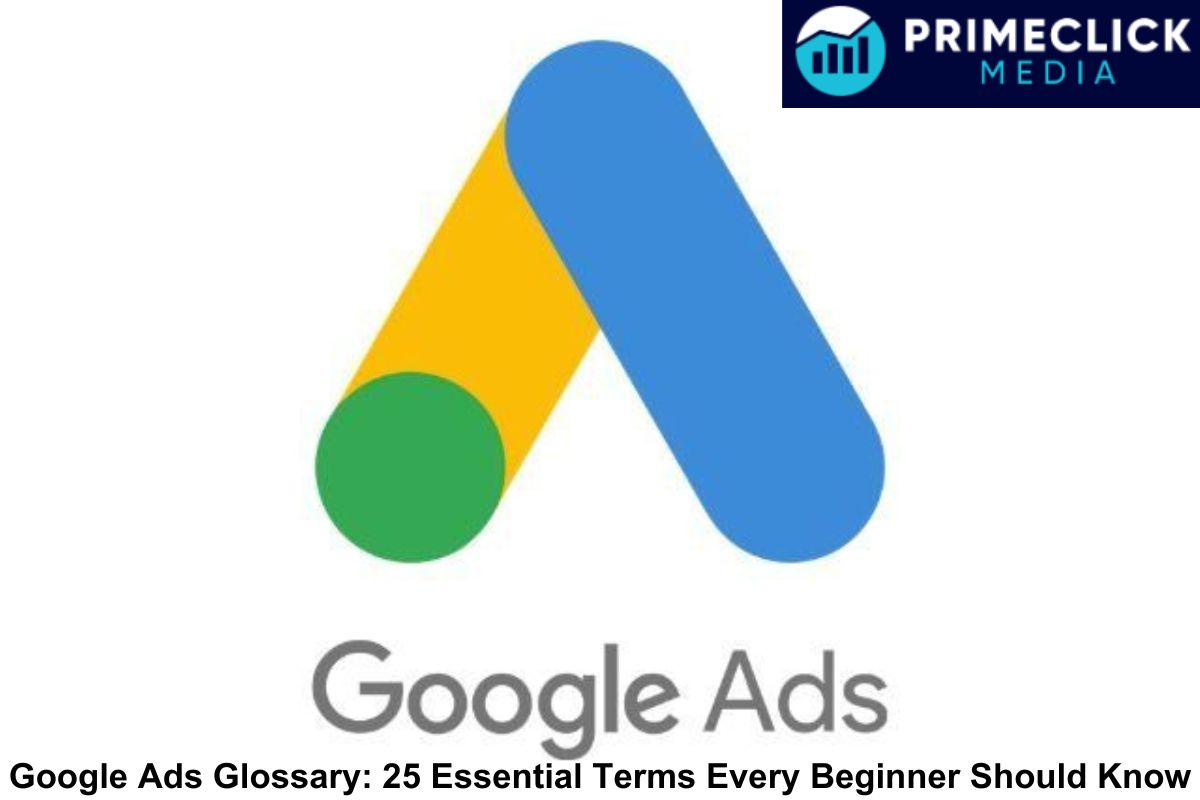Google Ads is one of the most powerful online advertising tools. If you are a beginner, you must know some key terms first. Here is a list of 25 important Google Ads terms that every beginner must know.
- Google Ads
Google Ads is an online advertising service. It enables businesses to advertise their products or services. Advertisers can target specific audiences based on keywords, location, and more.
- Campaign
An advertising campaign is a collection of ads that have a common budget. It focuses on attaining an object. Google Ads provides options including, but not limited to, search and display and video campaigns, among others.
- Ad groups
Ad groups are parts of a campaign. They contain one or more ads. Each ad group shares a set of keywords.
- Keywords
Keywords are words or phrases people search for. Your ads appear when users search for these keywords. Therefore, choosing the right keywords is essential to ad success.
- Impressions
An impression is recorded when an advertisement is served on a user’s monitor. This does not imply the user clicked on it. Impressions track ad visibility.
- Click-Through Rate (CTR)
CTR measures how often people click on your ad. It is calculated by dividing clicks by impressions. A higher CTR indicates more relevant ads.
- Cost Per Click (CPC)
CPC is the amount you spend when someone clicks on an ad. It is an extremely common pricing model in Google Ads. The cost depends strictly on the competitiveness of one’s keywords.
- Conversion
A conversion is when an individual performs a desired action. This can be through a purchase, form fill out, or sign-up. Monitoring conversions can help measure how effective ads are.
- Conversion Rate
The conversion rate percentage is the number of persons reaching a goal. It equals conversions divided by clicks: the higher the conversion, the more effective your ad is.
- Quality Score
Quality Score is a rating that Google gives your ads. It considers relevance, click-through rate, and landing page experience. Higher scores can lower costs and improve ad ranking.
- Ad Rank
Ad Rank is the position in which your ad will show. It is calculated from your bid and Quality Score. A higher Ad Rank results in better ad positions.
- Landing Page
A landing page is a web page where a user lands after clicking on an ad. It must be relevant and user-friendly. The experience of a landing page impacts your Quality Score.
- Cost Per Acquisition (CPA)
This is the cost of gaining one customer. It is obtained by dividing total cost by conversions. CPA is significant for budgeting and ROI measurement.
- Remarketing
Remarketing enables you to show ads to users who have visited your site. It re-engages potential customers who did not convert initially.
- Display Ads
Display ads are the ones on websites in the Google Display Network. They appear as text, image, and video-based ads. These increase a brand’s awareness and reach a huge audience.
- Search Ads
Search ads feature on Google search results pages. They are triggered by specific keywords. These are text-based and often feature above or below an organic result.
- Ad Extensions
Ad extensions offer extra information in your ads. These include phone numbers, site links, and addresses. Extensions make your ads more attractive and provide added value.
- Bid Strategy
Bid strategy is the method used to set how much you’re willing to pay per click or conversion. Common strategies include manual CPC, target CPA and enhanced CPC.
- Targeting
Targeting is the process of selecting who will view your advertisements. You can target according to location, language, device, and interests. When targeting is proper, then you can ensure that your ads reach the right people.
- Negative Keywords
Negative keywords are those words you don’t want your ads to show up for. They prevent showing ads to irrelevant users, thereby improving ad relevance and reducing costs.
- Ad Scheduling
Ad scheduling gives you control over when your ads display. You can specify to show ads during specific hours of the day or specific days of the week. This helps your ads display at a time when your audience is most active.
- Geotargeting
Geographic targeting lets you display ads based on location. You can target users by country, region, city, or even a specific radius. It is helpful for local businesses.
- Call-to-Action (CTA)
A CTA is a prompt that encourages users to take action. It could be “Buy Now,” “Learn More,” or “Get Started.” A strong CTA can increase your conversion rate.
- Budget
This is the budget that you’re willing to spend on your campaign. You can set either a daily or total campaign budget. Google Ads helps keep a leash on how much you’re spending.
- Analytics
Analytics measures ad performance and tracks this kind of data. They identify which ad works and which doesn’t. Analytics helps a lot to make improvements to one’s campaign over time.
Conclusion
Google Ads is a great tool for an advertiser, but key terms have to be understood before using it. However, it is either you are a small business owner or a digital advertising agency in Nigeria, the mastery of these terms will help navigate Google Ads more effectively.
Moreover, with digital advertising in Nigeria on the rise, staying competitive will depend on how knowledgeable one is about Google Ads.
Furthermore, for businesses looking to utilize Google Ads in Nigeria, knowing these terms helps manage their campaigns better and successfully. Therefore, learn and experiment with Google Ads to maximize your advertising budget





